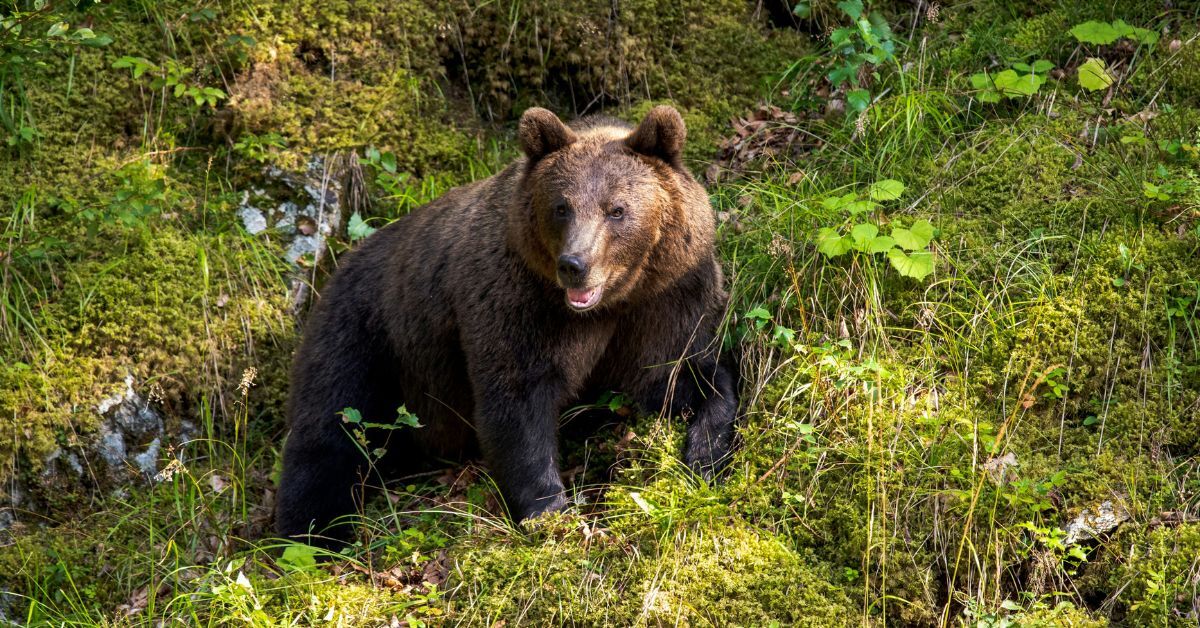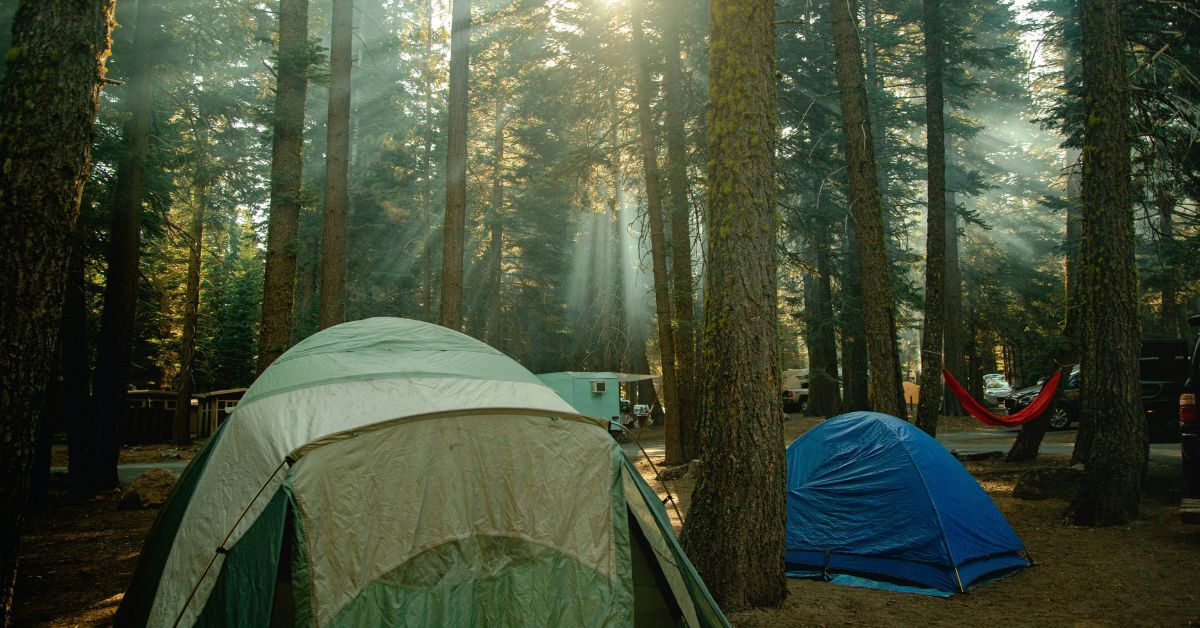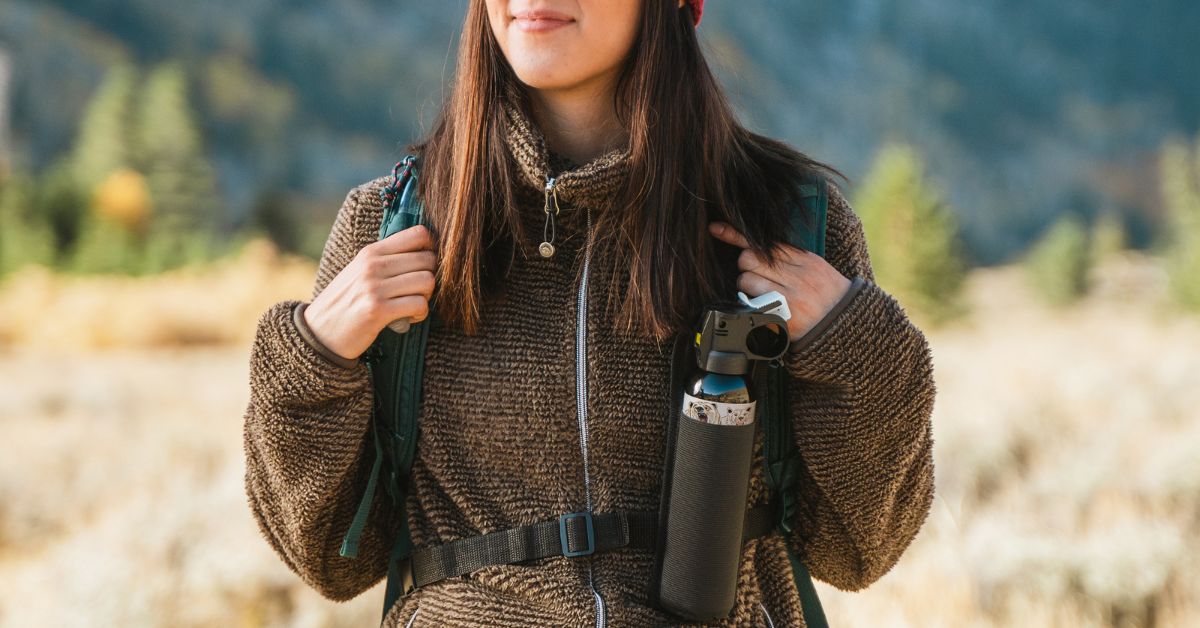How to Protect Yourself Against Bears During the Spring Hiking Season
05 22 2025
Essential Bear Safety Tips for Spring Hiking Season
As temperatures rise and trails begin to thaw, it’s the perfect time to lace up your boots and head out for your first spring hike. Whether you're planning a short walk through your favorite local trails or prepping for a multi-day backcountry adventure, bear safety needs to be at the top of your checklist.
Even if you’ve hiked the area before, a bear encounter can happen when you least expect it. While most bears tend to avoid humans, their behavior can be unpredictable, especially in early spring when they’re emerging from hibernation and searching for food. That’s why having a plan, the right gear, and bear safety tips in mind is essential before setting foot on the trail.

Unsplash: Alexandru-Bogdan Ghita
Is it safe to hike or camp during bear season?
Yes! But it is very important to be prepared and take precautions. Spring marks the start of bear season, when bears emerge from hibernation and begin actively foraging for food. While it can be thrilling to see a bear in the wild, it’s important to remember they can be unpredictable. Bears are typically most active in the early morning and late evening during spring and summer, which increases the chances of an encounter.
That said, you don’t need to avoid the outdoors altogether. With the right precautions, it is safe to hike and camp during bear season. Before you go, remember to do your research: Are you in black bear or grizzly territory? What are the local regulations on bear spray and food storage? Knowing this ahead of time helps you plan smarter and travel safer.
If exploring during bear season, avoid hiking at dawn or dusk, store your food properly, and keep bear spray easily accessible. Remember, being proactive is the best protection. Whether you’re hitting the trail or pitching a tent in bear country, we’ve got you covered with everything you need to stay safe and confident outdoors.
Bear Safety Tips for Hikers
Stay on the Trail and Stay Aware
Wandering off the beaten path might seem adventurous, but in bear country, it’s a risk not worth taking. Trails are designed with safety in mind for both you and the bears. Sticking to marked paths and following trail signs not only helps you avoid getting lost, but it also reduces your chances of surprising a bear in its natural habitat.
But even if you’re on the trail, don’t let your guard down. Bears can be anywhere, especially in areas with dense brush, nearby water sources, or sharp bends that reduce visibility. Move steadily, keep noise levels up, and always stay alert to your surroundings. Traveling in groups adds a layer of protection. Human sounds, scents, and the presence of multiple hikers can help deter curious or defensive bears.
Train your eyes to recognize the warning signs of bear activity: tracks in the mud, fresh droppings, claw marks on trees, overturned logs, or even a recently killed animal. If you spot a carcass, do not investigate. It could be an active feeding site, and you do not want to encounter a bear defending its meal.
In short, think of the trail as a boundary that keeps both you and the bears safer. Respect their space, stay alert, and let your awareness be your best tool for prevention.
Do Your Research: Know the Land and Its Bears
Before you set foot on the trail, do your homework — not just on the hike itself, but on the wildlife you may encounter. Bear safety starts long before you reach the trailhead. Use local park websites, visitor centers, or ranger stations to learn about the species in the area, recent sightings, and current bear activity.
A helpful question to ask is, 'Is this black bear territory, grizzly bear territory, or both?' The type of bear you may encounter can significantly impact your safety strategy. For example, grizzlies tend to be more aggressive when surprised, while black bears are more likely to flee. Learn more about the difference between grizzly and black bears.
It is important to remember that every park, forest, or backcountry region has specific regulations when it comes to bear protection. Some areas require hikers and campers to carry bear spray, whereas others may restrict it altogether. Research food storage rules, camping zones, and trail closures because they are often in place to help protect visitors and the wildlife.
When Are Bears Most Active? What Hikers Should Know
There’s nothing quite like hitting the trail at sunrise or winding down with a sunset hike. But if you’re exploring bear country, it helps to know when bears are more likely to be on the move—so you can take the right precautions.
Bears are generally most active during the early morning and late afternoon hours, particularly around sunrise and sunset. These periods are prime foraging times, especially after hibernation, when bears are searching for food and rebuilding their energy.
That doesn’t mean you should avoid hiking during these times—many people enjoy the beauty and calm of dawn and dusk hikes. Instead, awareness is key. Low light conditions can reduce visibility for both you and wildlife, which increases the chances of surprising a bear, especially if you're moving quietly or alone.
Take an extra precaution and plan your hikes during full daylight hours. Not only does this lower your chances of encountering a bear, but it also ensures you can see signs of wildlife activity like tracks, droppings, or claw marks.

Unsplash: Awar Meman
Bear Safety Tips for Campers
Secure All Food Items
Bears aren’t just looking for berries. Their sense of smell is seven times stronger than a bloodhound’s (nps.gov), which means even the faintest scent of food, lotion, or trash can lure one straight into your camp. To avoid turning your hike or campsite into a buffet, store all food, garbage, and scented items in bear-resistant containers like the Frontiersman Bear Safe Bear Resistant Food Storage Container.
Remember this doesn’t just apply to meals! Don’t forget about snacks, toothpaste, deodorant, sunscreen, and even wrappers. If it has a scent, lock it up. Never leave items unattended, and resist the urge to stash food in your tent as it’s an open invitation for a curious bear.
What If You Encounter a Bear?
- Never run, as this can result in a predatory response from the bear. Instead, try to remain still and calm at the scene.
- Never approach a bear, and always keep your distance from cubs, as their mother won’t be far behind.
- If you notice a bear from a distance, slowly back away while keeping your eyes on it and your arms up. If you’re with a group, continue to stay together.
- If you can’t get past a bear, turn around — don’t continue on the trail.
- Never take a picture of a bear, even if it seems like it’s off in the distance.
- Only use bear spray if the bear looks like it’s about to attack. Growling, charging, chomping teeth, and swinging its head can all indicate aggression.
- If you’re in close quarters with the bear, play dead until it is fully gone from your area.
Can Grizzly Bears Climb Trees?
Yes, grizzly bears can climb trees, though not as skillfully as black bears. Cubs and younger grizzlies are more agile, but even large adults can climb if motivated. Especially if they feel threatened or are pursuing food.
Don’t rely on trees as a safe escape plan. Your best strategy is to avoid startling a bear in the first place. It is recommended to carry bear deterrents like bear bells, bear horns, and bear spray because they can help prevent dangerous encounters with bears and help keep you protected. Bear bells and bear horns allow you to make your presence known to a bear through noise. It is good practice to wear a bear bell on your pack to avoid surprising a bear on a trail. Bear spray helps protect you during a bear encounter. When deployed, bear spray creates a large cloud that overwhelms a bear’s senses, giving you a chance to safely leave the area.
What is the best defense against bears?
When it comes to protecting yourself in bear territory, bear spray is your most effective, non-lethal form of defense. The SABRE Frontiersman MAX Bear & Mountain Lion Spray is the ultimate protection tool for any outdoor enthusiast. Whether you're a casual hiker or avid camper, this spray is an essential. It’s the only EPA-registered bear and mountain lion spray designed to deter both species, making it a versatile must-have for wilderness travel.
Whether you’re navigating dense backcountry or setting up camp deep in grizzly territory, having SABRE Frontiersman MAX bear spray in an accessible holster, not buried in your pack, can be the critical difference between a safe escape and a serious encounter.
Spring brings fresh air, blooming trails, and the perfect excuse to reconnect with the great outdoors, but it also signals a time when bears become active. Whether you’re hiking for a few hours or camping overnight, it is essential to be prepared. From understanding bear behavior to storing food properly and knowing how to react during an encounter, your preparedness plays a critical role in protecting both yourself and the wildlife you love.
The goal isn’t to avoid nature, but to enjoy it safely and responsibly. With the right gear, like the SABRE Frontiersman MAX Bear & Mountain Lion Spray, and a few key precautions, you can confidently explore trails, pitch your tent, and make unforgettable memories without unnecessary risk. Nature is unpredictable, but your safety plan doesn’t have to be.


